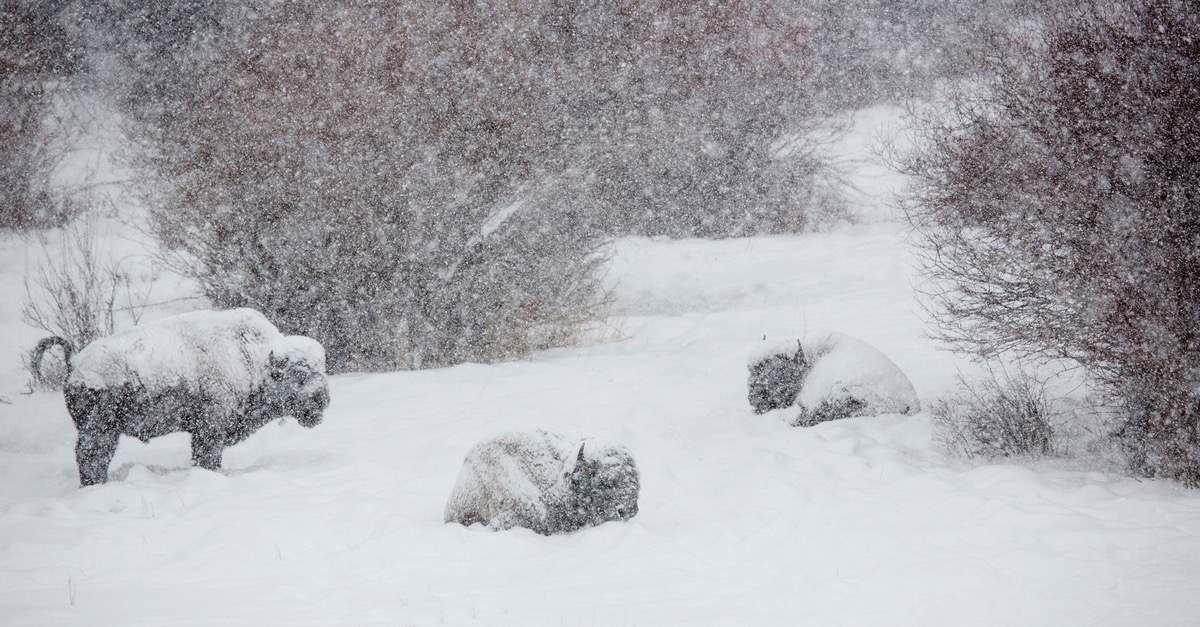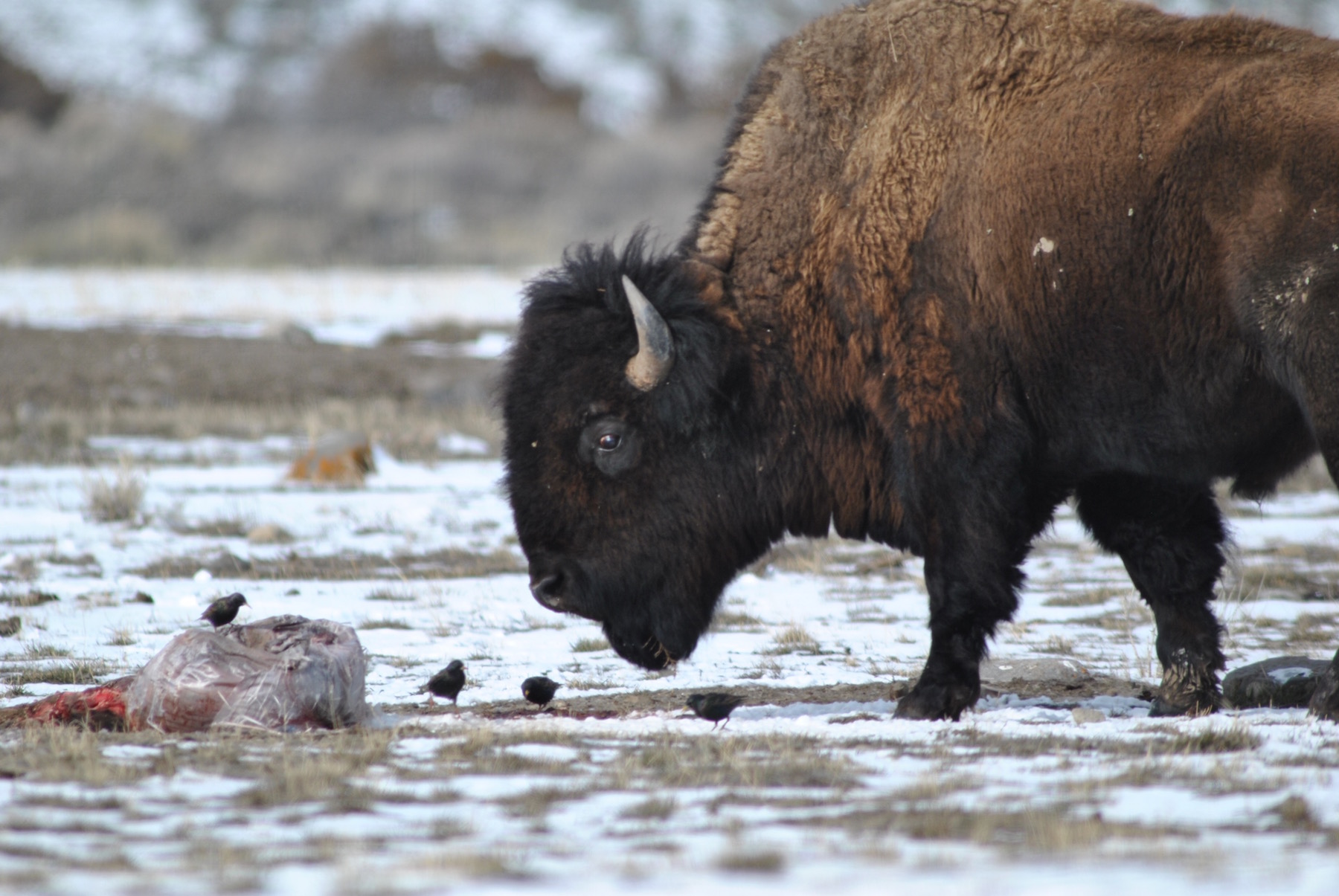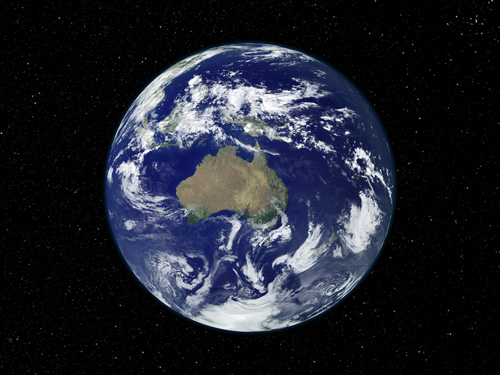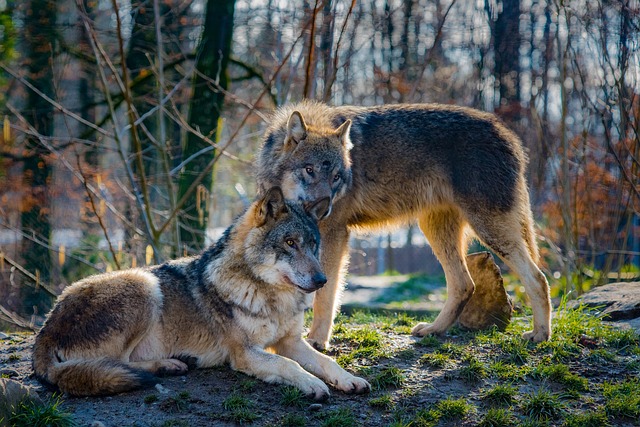
by DGR Colorado Plateau | Dec 4, 2015 | Biodiversity & Habitat Destruction
By Stephany Seay / Buffalo Field Campaign
Buffalo are still absent here in the Hebgen Basin. Patrols are conducting daily recons, searching through the buffalo’s migration corridors, but the gentle giants are keeping themselves out of Montana and, consequently, safe from the killers.
Along Yellowstone’s north boundary, in the Gardiner Basin, buffalo haven’t been so lucky. Another eight buffalo have been killed by Confederated Salish & Kootenai (CSKT) hunters who are “harvesting” ecologically extinct wild bison because they have a treaty right to do so. We would suggest that the CSKT and other tribes who hold treaty rights to the Yellowstone region also have a right to healthy, viable populations of wild bison on all federally unoccupied, unclaimed lands. And we would further suggest that the Interagency Bison Management Plan, which is driving the destruction of America’s last continuously wild buffalo herds, is not only violating the lives of wild buffalo, but violating treaty rights as well.

A bull bison approaches a relative’s remains, near Beattie Gulch, in the Gardiner Basin. Buffalo have intense family ties and deeply mourn the loss of those whom they love. Photo by Stephany Seay, Buffalo Field Campaign.
Most of the recent killings in Gardiner took place right outside Yellowstone’s boundary at Beattie Gulch, which is a tight bottle-neck corridor that the buffalo attempt to use to make it to other lower-elevation habitat in the Gardiner Basin. Hunters literally line up and wait for buffalo to cross the line from Yellowstone, where they can then be shot. Hunters and bison “managers” are aware that bison will seek the assumed safety of the Park when groups are shot at in this area. We have frequently seen hunters shoot into large and small groups of buffalo here, and the buffalo’s response has been to turn around and flee into the Park. This, according to Yellowstone, causes hunting to not be “effective” at killing enough, which, in turn, triggers Yellowstone’s response to initiate capture-for-slaughter operations. At the last Interagency Bison Management Plan meeting, some tribes had agreed to occasionally withhold from hunting right at the Park boundary to enable at least some buffalo to migrate to other expanses of habitat. Of course, these buffalo would still be pursued and eventually killed by hunters. The CSKT, who have killed the most through hunting this year and in years past, also hold an agreement with Yellowstone National Park to ship buffalo to slaughter. Since the CSKT also ship buffalo to slaughter, it’s not really in their interest to allow the buffalo to move further into the Gardiner Basin.
BFC’s Gardiner patrols have also reported that hunters from other tribes hunting under treaty, who normally start their seasons later in the winter going into early spring, have been arriving to Gardiner. With Yellowstone threatening slaughter, hunters are anxious to kill as many buffalo as possible before capture for slaughter begins. For the buffalo, it doesn’t matter if they cross the Park boundary or not, as they’ll likely be killed either way.

Many thanks to our friend and Gardiner resident, Fred Baker, for sharing this image with us.
The killing of the buffalo, whether it’s through “hunting” or slaughter, is all part of the Interagency Bison Management Plan (IBMP), which was crafted for the benefit of livestock interests, not buffalo. Even those hunting under treaty rights are being used by Montana’s livestock interests, and consequently, the IBMP, to facilitate the destruction of the buffalo and to prevent them from restoring themselves in Montana and elsewhere. Whether the excuse for these fatal tactics is brucellosis or population control, neither are based on reality, they only serve a political agenda. The IBMP exists because Montana livestock interests sued Yellowstone for “allowing” wild bison to migrate into Montana, and because of a law crafted by the livestock industry — MCA 81-2-120 — which places the Montana Department of Livestock in charge of managing wild bison. One industry’s intolerance is driving a national treasure towards the brink of extinction. We know you care deeply about wild bison, and one of the single most important things you can do is to help repeal this law. Contact Governor Steve Bullock today.
Wild is the Way–Roam Free!
–Stephany
Buffalo Field Campaign’s Mission: To protect the natural habitat of wild migratory buffalo and native wildlife, to stop the slaughter and harassment of America’s last wild buffalo as well as to advocate for their lasting protection, and to work with people of all Nations to honor the sacredness of wild buffalo.

by Deep Green Resistance News Service | Nov 11, 2013 | Agriculture, Climate Change, Listening to the Land
By Max Wilbert / Deep Green Resistance Great Basin
In June 1988, climatologist and NASA scientist James Hansen stood before the Energy and Natural Resources Committee in the United States Senate. The temperature was a sweltering 98 degrees.
“The earth is warmer in 1988 than at any time in the history of instrumental measurements,” Hansen said. “The global warming now is large enough that we can ascribe with a high degree of confidence a cause-and-effect relationship to the greenhouse effect… Our computer climate simulations indicate that the greenhouse effect is already large enough to begin to effect the probability of extreme events such as summer heat waves.”
Hansen has authored some of the most influential scientific literature around climate change, and like the vast majority of climate scientists, has focused his work on the last 150 to 200 years – the period since the industrial revolution.
This period has been characterized by the widespread release of greenhouse gases like carbon dioxide (CO2) and methane (CH4), and by the clearing of land on a massive scale – the plowing of grasslands and felling of forests for cities and agricultural crops.
Now, the world is on the brink of catastrophic climate change. Hansen and other scientists warn us that if civilization continues to burn fossil fuels and clear landscapes, natural cycles may be disrupted to the point of complete ecosystem breakdown – a condition in which the planet is too hot to support life. Hansen calls this the Venus Syndrome, named after the boiling planet enshrouded in clouds of greenhouse gases.
“If we also burn the tar sands and tar shale [low grade, high carbon fossil fuels], I believe the Venus syndrome is a dead certainty,” Hansen has said.
If humanity wishes to have a chance of avoiding this fate, it is important that we understand global warming in detail. Why is it happening? When did it start? What fuels it? And, most importantly, what can stop it?
How old is global warming?
New studies are showing that the current episode of global warming may be a great deal older than previously believed – which may entirely change our strategy to stop it.
While fossil fuels have only been burned on a large scale for 200 years, land clearance has been a defining characteristic of civilizations – cultures based around cities and agriculture – since they first emerged around 8,000 years ago.
This land clearance has impacts on global climate. When a forest ecosystem is converted to agriculture, more than two thirds of the carbon that was stored in that forest is lost, and additional carbon stored in soils rich in organic materials will continue to be lost to the atmosphere as erosion accelerates.
Modern science may give us an idea of the magnitude of the climate impact of this pre-industrial land clearance. Over the past several decades of climate research, there has been an increasing focus on the impact of land clearance on modern global warming. The Intergovernmental Panel on Climate Change, in it’s 2004 report, attributed 17% of global emissions to cutting forests and destroying grasslands – a number which does not include the loss of future carbon storage or emissions directly related to this land clearance, such as methane released from rice paddies or fossil fuels burnt for heavy equipment.
Some studies show that 50% of the global warming in the United States can be attributed to land clearance – a number that reflects the inordinate impact that changes in land use can have on temperatures, primarily by reducing shade cover and evapotranspiration (the process whereby a good-sized tree puts out thousands of gallons of water into the atmosphere on a hot summer day – their equivalent to our sweating).
So if intensive land clearance has been going on for thousands of years, has it contributed to global warming? Is there a record of the impacts of civilization in the global climate itself?
10,000 years of Climate Change
According to author Lierre Keith, the answer is a resounding yes. Around 10,000 years ago, humans began to cultivate crops. This is the period referred to as the beginning of civilization, and, according to the Keith and other scholars such as David Montgomery, a soil scientist at the University of Washington, it marked the beginning of land clearance and soil erosion on a scale never before seen – and led to massive carbon emissions.
“In Lebanon (and then Greece, and then Italy) the story of civilization is laid bare as the rocky hills,” Keith writes. “Agriculture, hierarchy, deforestation, topsoil loss, militarism, and imperialism became an intensifying feedback loop that ended with the collapse of a bioregion [the Mediterranean basin] that will most likely not recover until after the next ice age.”
Montgomery writes, in his excellent book Dirt: The Erosion of Civilizations, that the agriculture that followed logging and land clearance led to those rocky hills noted by Keith.
“It is my contention that the invention of [agriculture] fundamentally altered the balance between soil production and soil erosion – dramatically increasing soil erosion.
Other researchers, like Jed Kaplan and his team from the Avre Group at the Ecole Polytechnique Fédérale de Lausanne in Switzerland, have affirmed that preindustrial land clearance has had a massive impact on the landscape.
“It is certain that the forests of many European countries were substantially cleared before the Industrial Revolution,” they write in a 2009 study.
Their data shows that forest cover declined from 35% to 0% in Ireland over the 2800 years before the beginning of the Industrial Revolution. The situation was similar in Norway, Finland, Iceland, where 100% of the arable land was cleared before 1850.
Similarly, the world’s grasslands have been largely destroyed: plowed under for fields of wheat and corn, or buried under spreading pavement. The grain belt, which stretches across the Great Plains of the United States and Canada, and across much of Eastern Europe, southern Russia, and northern China, has decimated the endless fields of constantly shifting native grasses.
The same process is moving inexorably towards its conclusion in the south, in the pampas of Argentina and in the Sahel in Africa. Thousands of species, each uniquely adapted to the grasslands that they call home, are being driven to extinction.
“Agriculture in any form is inherently unsustainable,” writes permaculture expert Toby Hemenway. “We can pass laws to stop some of the harm agriculture does, but these rules will reduce harvests. As soon as food gets tight, the laws will be repealed. There are no structural constraints on agriculture’s ecologically damaging tendencies.”
As Hemenway notes, the massive global population is essentially dependent on agriculture for survival, which makes political change a difficult proposition at best. The seriousness of this problem is not to be underestimated. Seven billion people are dependent on a food system – agricultural civilization – that is killing the planet.
The primary proponent of the hypothesis – that human impacts on climate are as old as civilization – has been Dr. William Ruddiman, a retired professor at the University of Virginia. The theory is often called Ruddiman’s Hypothesis, or, alternately, the Early Anthropocene Hypothesis.
Ruddiman’s research, which relies heavily on atmospheric data from gases trapped in thick ice sheets in Antarctica and Greenland, shows that around 11,000 years ago carbon dioxide levels in the atmosphere began to decline as part of a natural cycle related to the end of the last Ice Age. This reflected a natural pattern that has been seen after previous ice ages.
This decline continued until around 8000 years ago, when the natural trend of declining carbon dioxide turned around, and greenhouse gases began to rise. This coincides with the spread of civilization across more territory in China, India, North Africa, the Middle East, and certain other regions.
Ruddiman’s data shows that deforestation over the next several thousand years released 350 Gigatonnes of carbon into the atmosphere, an amount nearly equal to what has been released since the Industrial Revolution. The figure is corroborated by the research of Kaplan and his team.
Around 5000 years ago, cultures in East and Southeast Asia began to cultivate rice in paddies – irrigated fields constantly submerged in water. Like an artificial wetland, rice patties create an anaerobic environment, where bacteria metabolizing carbon-based substances (like dead plants) release methane instead of carbon dioxide and the byproduct of their consumption. Ruddiman points to a spike in atmospheric methane preserved in ice cores around 5000 years ago as further evidence of warming due to agriculture.
Some other researchers, like R. Max Holmes from the Woods Hole Research Institute and Andrew Bunn, a climate scientist from Western Washington University, believe that evidence is simply not conclusive. Data around the length of interglacial periods and the exact details of carbon dioxide and methane trends is not detailed enough to make a firm conclusion, they assert. Regardless, it is certain that the pre-industrial impact of civilized humans on the planet was substantial.
“Our data show very substantial amounts of human impact on the environment over thousands of years,” Kaplan said. “That impact really needs to be taken into account when we think about the carbon cycle and greenhouse gases.”
Restoring Grasslands: a strategy for survival
If the destruction of grasslands and forests signals the beginning of the end for the planet’s climate, some believe that the restoration of these natural communities could mean salvation.
Beyond their beauty and inherent worth, intact grasslands supply a great deal to humankind. Many pastoral cultures subsist entirely on the animal protein that is so abundant in healthy grasslands. In North America, the rangelands that once sustained more than 60 million Bison (and at least as many pronghorn antelope, along with large populations of elk, bear, deer, and many others) now support fewer than 45 million cattle – animals ill-adapted to the ecosystem, who damage their surroundings instead of contributing to them.
Healthy populations of herbivores also contribute to carbon sequestration in grassland soils by increasing nutrient recycling, a powerful effect that allows these natural communities to regulate world climate. They also encourage root growth, which sequesters more carbon in the soil.
Just as herbivores cannot survive without grass, grass cannot thrive without herbivores.
Grasslands are so potent in their ability to pull carbon dioxide out of the atmosphere that some believe restoring natural grasslands could be one of the most effective tools in the fight against runaway global warming.
“Grass is so good at building [carbon rich] soil that repairing 75 percent of the planet’s rangelands would bring atmospheric CO2 to under 330 ppm in 15 years or less,” Lierre Keith writes.
The implications of this are immense. It means, quite simply, that one of the best ways to reduce greenhouse gases in the atmosphere is to move away from agriculture, which is based upon the destruction of forests and grasslands, and towards other means of subsistence. It means moving away from a way of life 10,000 years old. It means rethinking the entire structure of our food system – in some ways, the entire structure of our culture.
Some ambitious, visionary individuals are working in parallel with this strategy, racing against time to restore grasslands and to stabilize Earth’s climate.
In Russia, in the remote northeastern Siberian state of Yakutia, a scientist named Sergei Zimov has an ambitious plan to recreate a vast grassland – a landscape upon whom millions of herbivores such as mammoths, wild horses, reindeer, bison, and musk oxen fed and roamed until the end of the last ice age.
“In future, to preserve the permafrost, we only need to bring herbivores,” says Zimov. “Why is this useful? For one, the possibility to reconstruct a beautiful [grassland] ecosystem. It is important for climate stability. If the permafrost melts, a lot of greenhouse gases will be emitted from these soils.”
Zimov’s project is nicknamed “Pleistocene Park,” and stretches across a vast region of shrubs and mosses, low productivity communities called ‘Taiga’. But until 12,000 years ago, this landscape was highly productive pastures for a span of 35,000 years, hosting vast herds of grazers and their predators.
“Most small bones don’t survive because of the permafrost,” says Sergei Zimov. “[But] the density of skeletons in this sediment, here and all across these lowlands: 1,000 skeletons of mammoth, 20,000 skeletons of bison, 30,000 skeletons of horses, and about 85,000 skeletons of reindeer, 200 skeletons of musk-ox, and also tigers [per square kilometer].”
These herds of grazers not only supported predators, but also preserved the permafrost beneath their feet, soils that now contain 5 times as much carbon as all the rainforests of Earth. According to Zimov, the winter foraging behavior of these herbivores was the mechanism of preservation.
“In winter, everything is covered in snow,” Zimov says. “If there are 30 horses per square kilometer, they will trample the snow, which is a very good thermal insulator. If they trample in the snow, the permafrost will be much colder in wintertime. The introduction of herbivores can reduce the temperatures in the permafrost and slow down the thawing.”
In the Great Plains of the United States and Canada, a similar plan to restore the landscape and rewild the countryside has emerged. The brainchild of Deborah and Frank Popper, the plan calls for the gradual acquisition of rangelands and agricultural lands across the West and Midwest, with the eventual goal of creating a vast nature preserve called the Buffalo Commons, 10-20 million acres of wilderness, an area 10 times the size of the largest National Park in the United States (Wrangell-St. Elias National Park in Alaska).
In this proposed park, the Poppers envision a vast native grassland, with predators following wandering herds of American Bison and other grazers who follow the shifting grasses who follow the fickle rains. The shifting nature of the terrain in the Great Plains requires space, and this project would provide it in tracts not seen for hundreds of years.
In parts of Montana, the work has already begun. Many landowners have sold their farms to private conservation groups to fill in the gaps between isolated sections of large public lands. Many Indian tribes across the United States and Southern Canada are also working to restore Bison, who not only provide high quality, healthy, traditional food but also contribute to biodiversity and restore the health of the grasslands through behavior such a wallowing, which creates small wetlands.
Grasslands have the power to not only restore biodiversity and serve as a rich, nutrient-dense source of food, but also to stabilize global climate. The soils of the world cannot survive agricultural civilizations for much longer. If the plows continue their incessant work, this culture will eventually go the way of the Easter Islanders, the Maya, the Greeks, the Macedonians, the Harrapans, or the Roman Empire – blowing in the wind, clouding the rivers. Our air is thick with the remnants of ancient soils, getting long overdue revenge for their past mistreatment.
The land does not want fields. It wants Bison back. It wants grasslands, forests, wetlands, birds. It wants humans back, humans who know how to live in a good way, in relationship with the soil and the land and all the others. The land wants balance, and we can help. We can tend the wild and move towards other means of feeding ourselves, as our old ancestors have done for long years. It is the only strategy that takes into account the needs of the natural world, the needs for a land free of plows and tractor-combines.
In time, with luck and hard work, that ancient carbon will be pulled from the atmosphere – slowly at first, but then with gathering speed. The metrics of success are clear: a calmed climate, rivers running free, biodiversity rebounding. The task of achieving that success is a great challenge, but guided by those who believe in restoring the soil, we can undo 8,000 years of mistakes, and finally begin to live again as a species like any other, nestled in our home, at peace and in balance, freed at last from the burdens of our ancestors’ mistakes.
Bibliography
Climate meddling dates back 8,000 years. By Alexandra Witze. April 23rd, 2011. Science News. http://www.sciencenews.org/view/generic/id/71932/title/Climate_meddling_dates_back_8%2C000_years#video
U.S. Environmental Protection Agency. Global Emissions. Accessed June 23rd, 2012. http://epa.gov/climatechange/ghgemissions/global.html
The prehistoric and preindustrial deforestation of Europe. By Kaplan et al. Avre Group, Ecole Polytechnique Federale de Lausanne. Quaternary Science Reviews 28 (2009) 3016-3034.
‘Land Use as Climate Change Mitigation.’ Stone, Brian Jr. Environmental Science and Technology 43, 9052-9056. 11/2009.
‘Functional Aspects of Soil Animal Diversity in Agricultural Grasslands’ by Bardgett et al. Applied Soil Ecology, 10 (1998) 263-276.
Zimov, Sergei. Personal Interviews, June/July 2010.

by Deep Green Resistance News Service | Jul 10, 2012 | Climate Change
By Max McClure / Stanford University News
Yellowstone is the nation’s oldest national park – it has been protected since 1872. So when Stanford biology Professor Elizabeth Hadly saw several years ago that its wetland cover and amphibian populations were both declining, she was a little surprised.
“Practically its entire watershed is protected,” she said. “These changes weren’t caused by something from inside the park.”
Yellowstone was providing evidence to support a growing suspicion held by Hadly and a large number of other prominent environmental scientists.
Most current predictions of environmental change are based on extrapolations from current trends. But what if that isn’t an accurate picture of the future? What if we are approaching a critical threshold – one that, once crossed, would lead to accelerated, widespread and largely unpredictable environmental degradations?
This is the frightening conclusion of a paper co-authored by Hadly that appears in the new issue of Nature – an issue devoted to the environment, in anticipation of the United Nations’ June 20-22 Conference on Sustainable Development. The consensus statement by 22 respected scientists uses past examples to suggest that Earth’s current systems will experience a major disruption – perhaps within a few generations.
“The environment will enter a new state,” said Hadly. “And we don’t know exactly what that state will look like.”
Reaching the tipping point
It’s already established that global biological systems are capable of very rapid, wholesale shifts. Of the five major extinction events in Earth’s history, at least four of them were accompanied by this kind of critical transition. Global conditions that had remained relatively stable for millions of years changed dramatically over a period lasting less than 5 percent of that time.
There’s reason to believe that “pronounced change” in “assemblages of species,” as the paper puts it – such as extinction events – are a reliable marker of these shifts. And we happen to be in the middle of an ongoing human-driven mass extinction.
The litany of ways in which humans have altered the Earth’s environment is well known. But why do these scientists now believe that we are moving toward a major, irreversible shift?
“There’s the idea that, once you have more than 50 percent of wholesale disturbance in a given ecological system, major disturbance in the rest of the system will inevitably follow,” said Hadly, who is also a senior fellow at the Stanford Woods Institute for the Environment.
About 43 percent of Earth’s land has already been converted to agricultural or urban use and, if current trends continue, is expected to reach the 50 percent mark by 2025. By 2060, using current trends, the number will be 70 percent.
By comparison, the last critical shift Earth underwent was the end of the last Ice Age. That famously dramatic example of climate change only involved ice melting from 30 percent of Earth’s surface, and it resulted in a major transition in global climatic conditions and the distribution of life on the planet.
No escape
What Hadly saw in Yellowstone suggests these global shifts may already be affecting isolated, local environments.
“As an ecologist, I was trained to measure changes on a local or a regional level – looking at changes in a 1-by-1-meter plot,” said Hadly. “Now, there’s a heck of a lot of change in that 1-meter plot that has nothing to do with local processes.”
The global drivers that are working their way into every corner of the planet all have humans behind the wheel. Human population growth and increased resource consumption mean that anywhere from 20 to 40 percent of the planet’s energy produced by living things now goes to support human society.
The ecosystems that do survive are becoming more homogeneous and simpler – a combination of human-introduced species and habitat degradation and fragmentation.
“We’re fairly naïve in managing for new combinations of species that will exist,” Hadly said, “in part because we usually anticipate ecosystem change on a species-by-species basis.”
The human connection
Although the exact nature of Earth’s next state is unpredictable, the researchers expect it to resemble an accelerated version of these already-in-motion processes.
These shifts are potentially disastrous for humanity as well.
“Citizens of wealthy countries like the U.S. are less aware of catastrophic shifts in ecosystem services because we have the ability to cobble together short-term fixes that mask the global trend,” said Hadly. “But other countries aren’t so buffered.” In a world marked by water shortages and climate change, “we simply aren’t yet equipped with a flexible intergovernmental structure necessary to manage for this future.”
The United States may be buffered, but it can help with a crucial environmental task: monitoring ecosystems for evidence of this shift. America is large and geographically diverse enough that, Hadly says, “we could be some of the first to observe these changes, and if we are proactive, we can bear witness to the rest of the world.”
Which will be crucial for predicting when the shift is coming – or if it’s already here.
From Stanford University News: http://news.stanford.edu/news/2012/june/earth-tipping-point-060712.html

by Deep Green Resistance News Service | Feb 28, 2012 | Biodiversity & Habitat Destruction, NEWS
By Jeremy Hance, Mongabay
Less than a year after being pulled off the Endangered Species Act (ESA), gray wolves (Canis lupus) in the western U.S. are facing an onslaught of hunting. The hunting season for wolves has just closed in Montana with 160 individuals killed, around 75 percent of 220-wolf kill quota for the state. In neighboring Idaho, where 318 wolves have been killed so far by hunters and trappers, the season extends until June. In other states—Oregon, Washington, California, and Utah—wolf hunting is not currently allowed, and the species is still under federal protection in Wyoming.
In Idaho fourteen wolves were also killed by the government using helicopters in a bid to prop up elk herds. Legislators in the state are also mulling a recent proposal to allow aerial hunting and the use of live bait to kill wolves that have harassed livestock or pets. Republican and sheep rancher Jeff Siddoway, who introduced the legislation, said he would have no problem using his dog as live bait.
Wolves are hugely controversial in the region: ranchers point to them as a cause for livestock mortalities, while hunters blame them for a decline in elk. Biologists, however, say the elk decline may be due to a combination of drought, hunting by people, and the return of wolves. By nature wolves prey on young, old, and weak animals, and likely have little overall impact on a healthy herd.
In fact, a recent study study in Montana’s Bitterroot Mountains found that wolves were not a primary driver behind elk mortalities. Examining 36 elk calf kills, the study determined that mountain lions were responsible for thirteen (36 percent), black bears killed four (11 percent), wolves also killed four (11 percent), five died of natural causes (13 percent), and ten mortalities were due to unknown causes (27 percent).
However, as top predators, wolves have a big impact on elk and other prey’s behavior, which results in massive implications for the health of an ecosystem. Long-term studies in Yellowstone National Park have recorded notable changes since the return of wolves after a 70-year absence. The findings have shown that wolves are key to a healthy, diverse ecosystem.
Research has found that by keeping elk on the run and in hiding, wolves protect plants and trees that had long been over-browsed, saving some species from local extinction. The presence of wolves allowed trees to grow up along rivers for the first time in decades in Yellostone, protecting against erosion and cooling rivers through shade. In turn, the riverside trees allowed for the return of beavers, which had nearly vanished from Yellowstone. Through dam-building beavers created new habitat for fish. With more trees and shrub cover, songbird populations rose. Scavengers from bear to ravens were aided by wolf-kills. In all, biodiversity and wildlife abundance blossomed.
Less than 2,000 wolves are currently found in seven states of the western U.S., the bulk of them in Montana, Idaho, and Wyoming. California has only one. By contrast 3,000 wolves are found in northern Minnesota alone.







